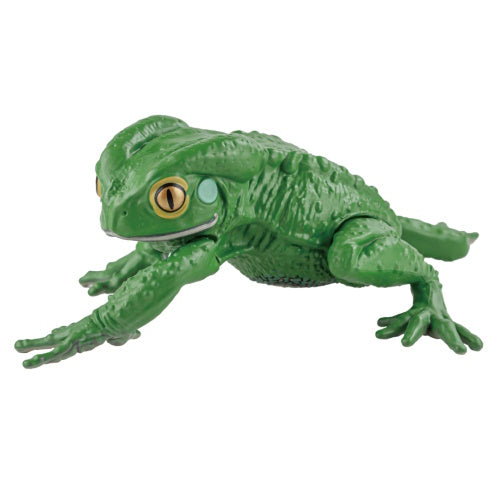Rain Frog for Sale: Open the Elegance of Nature with Your Own Amphibian Friend!
Rain Frog for Sale: Open the Elegance of Nature with Your Own Amphibian Friend!
Blog Article
The Very Best Reptile Enclosures: Just How to Create the Ideal Habitat
Creating the ideal habitat for reptiles is not practically putting them in a storage tank or unit; it entails a thoughtful factor to consider of various elements that contribute to their general wellness. From the size of the enclosure to the type of substrate used, every element plays an important function in offering an environment where your reptile can flourish. By understanding the specific needs of your reptile varieties and applying the appropriate environment configuration, you can ensure their health and joy in bondage.
Selecting the Right Enclosure Size
When picking an unit dimension for reptiles, it is necessary to consider their all-natural habits and space needs to guarantee their wellness and health. When it comes to habitat area, various reptile species have varying needs. Arboreal varieties like chameleons or tree snakes require vertical space for setting down and climbing up, while terrestrial varieties such as bearded dragons or leopard geckos require more flooring area for exploring and thermoregulation. Marine turtles like red-eared sliders necessitate units with both water and acreage for swimming and basking.
A general rule of thumb is to provide enough space for the reptile to exhibit natural habits, such as basking, concealing, climbing up, and foraging. By meticulously considering the particular requirements of the reptile types in concern, proprietors can produce an ideal and improving environment that advertises total health and urges all-natural habits.
Establishing Appropriate Home Heating Components
To ensure the well-being and health of reptiles in their enclosures, it is necessary to thoroughly set up appropriate burner. Reptiles are ectothermic animals, suggesting they count on exterior warm sources to regulate their body temperature. When establishing up burner in a reptile room, it is important to consider the specific temperature level needs of the varieties you are looking after. Different reptiles have varying temperature level requires based on their all-natural environment, so it is very important to research and understand these needs.
One usual and efficient burner for reptile enclosures is a warmth lamp or ceramic warmth emitter. These warm resources can be used to produce a temperature gradient within the enclosure, enabling reptiles to move in between warmer and cooler areas as needed. In addition, under-tank heating pads or warmth mats can be made use of to offer stubborn belly warm, which is specifically useful for reptiles that call for additional heat to aid in digestion.
Monitoring the temperature within the room making use of a thermostat is vital to make certain that the burner are preserving the proper temperature level array for your reptile. Routinely inspect and change the home heating components as required to create a healthy and comfortable atmosphere for your scaly good friend.
Picking Appropriate Lights Components

Giving the Ideal Substrate
Selecting the proper substratum is essential for creating a comfy and ideal environment for reptiles great post to read in their units. Some reptiles, such as desert-dwelling varieties like bearded dragons, prosper on substrates like calcium sand or reptile carpet, while others, like round pythons, like coconut husk or aspen bed linen to maintain moisture levels.
Additionally, the size of the reptile need to likewise influence your selection of substrate, as hatchlings may call for a finer material to avoid consumption. Avoid substratums that can trigger impaction, such as loose substratums like sand or gravel, specifically for reptiles understood to ingest their bed linens. Consistently cleansing and replacing the substratum is important to make certain a sanitary and tidy atmosphere for your reptile. By selecting the suitable Read More Here substratum, you can add to the total health and wellness and health of your scaly friend.
Decorating for Enrichment and Convenience
Thinking about the substrate's role in giving a structure for all-natural behaviors and maintaining an ideal setting, improving the reptile enclosure with correct decorations is crucial for both enrichment and convenience. When embellishing the enclosure, it is essential to take into consideration the reptile's species-specific demands and habits to create a room that promotes physical and mental wellness. By incorporating a selection of designs that mimic the reptile's all-natural habitat, proprietors can ensure their pet's convenience and stimulate their all-natural instincts, inevitably leading to a happier and much healthier reptile.
Final Thought

Creating the best environment for reptiles is not just regarding positioning them in a tank or enclosure; it includes a thoughtful factor to consider of various elements that add to their total well-being.Selecting the proper substratum is essential for producing a ideal and comfortable environment for reptiles in their rooms. Some reptiles, such as desert-dwelling types like bearded dragons, grow on substratums like calcium sand or reptile carpet, while others, like ball pythons, choose coconut link husk or aspen bed linen to preserve moisture degrees.
By including a selection of decors that mimic the reptile's natural environment, proprietors can guarantee their family pet's convenience and boost their all-natural reactions, inevitably leading to a better and much healthier reptile.
In verdict, developing the ideal environment for reptiles entails picking the ideal unit size, heating elements, lighting components, substratum, and decors.
Report this page